
Photosyn is the premium brand under ZOOX, specializing in cultivating high-quality indoor and freshwater aquatic plants.
ZOOX boasts a comprehensive industry research and development laboratory, encompassing self-developed designs for lighting fixtures, heat dissipation, Spectrum R&D, circuitry, as well as optical structures.
Photosyn caters to the high-end plant market, horticulture industry, marine mammal facilities, and zoos, providing superior indoor lighting systems.
In addition to consumer-grade products, we also offer commercial-grade lighting systems that have been deployed in various marine aquariums & plant gardens, marine mammal hospitals, zoos, civilian hydroponic gardens, and government research institutions in Korea and Japan, among others.
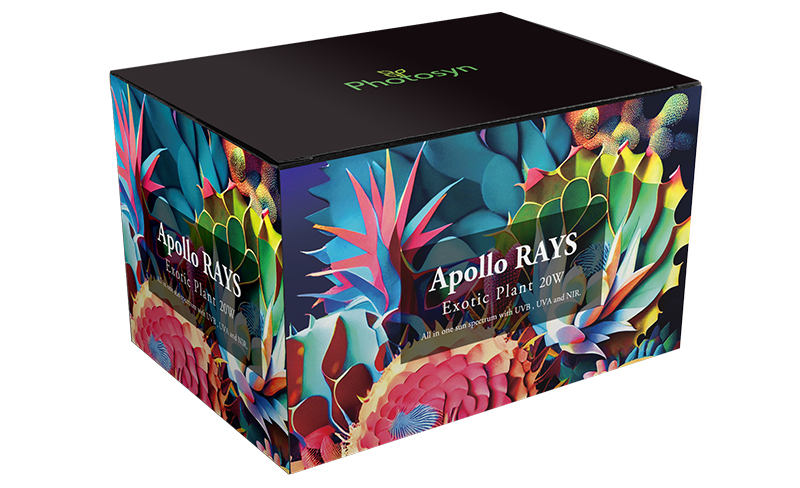
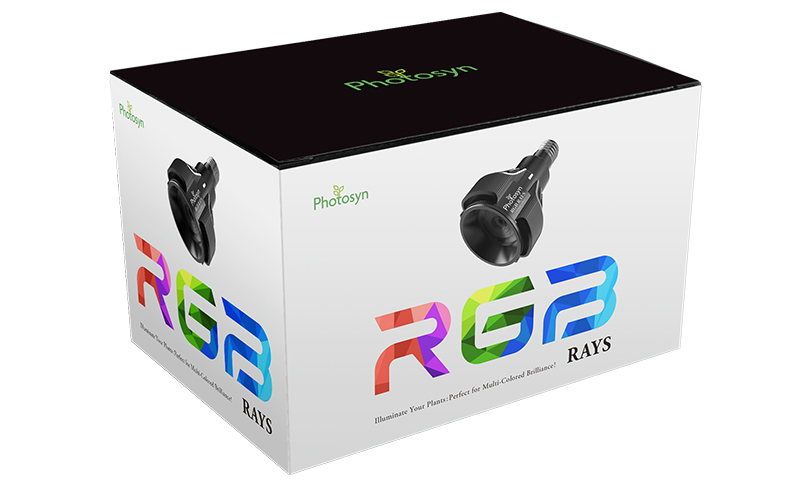
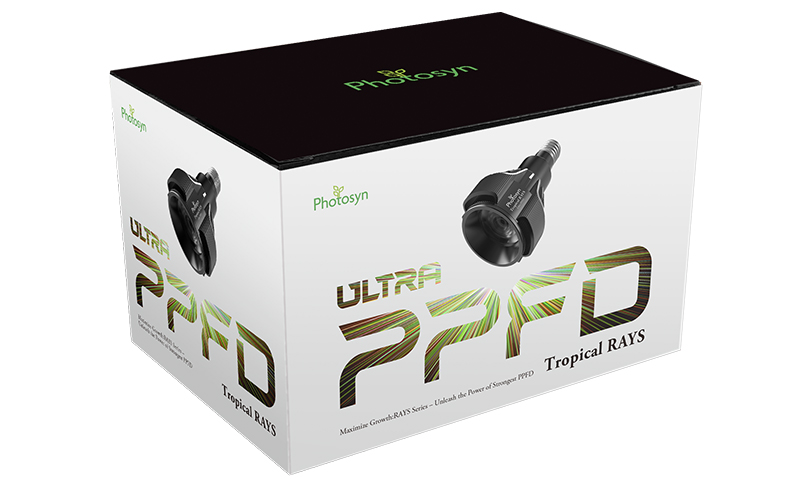
Apollo RAYS
Exotic Plant 20W
All in one sun spectrum with UVB, UVA and NIR.
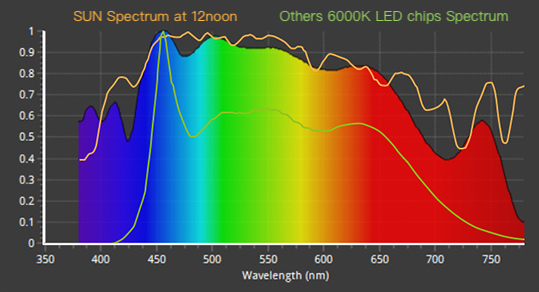
RGB RAYS
Visual Effect 20W
Illuminate your plant:Prefect for Multi-colored Brilliance.
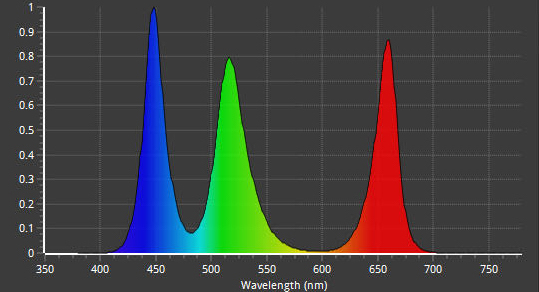
Tropical RAYS
Ultra PPFD 20W
Maximize Growth:Unleash the Power of Strongest PPFD.
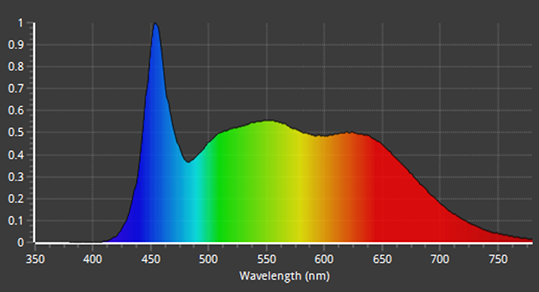
Apollo Magnetic
Exotic Plant 15W
All in one sun spectrum with UVB, UVA and NIR.
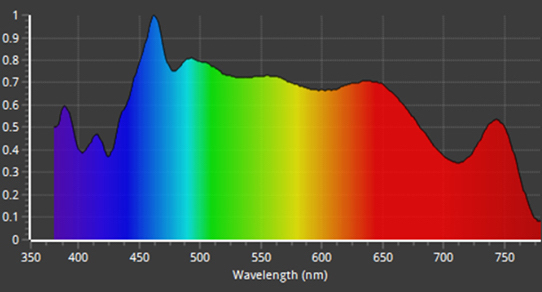
| Product name | Color temperature | Color rendering | PPFD @30cm | Coverage @30cm | Optic | Power consumption | Input | Type |
|---|---|---|---|---|---|---|---|---|
| Apollo RAYS Exotic Plants 20W | ~6,000K | Max 99+ | Wide 250umol/㎡/s Narrow 700umol/㎡/s | Wide ⌀55cm Narrow ⌀25cm | ZOOM system 30~60° | 20W±0.5% | 90-240V 50/60Hz | E26/E27 |
| RGB RAYS Visual Effect 20W | ~10,000K-11,000K | N/A | 250umol/㎡/s | ⌀60cm | 60° | 20W±0.5% | 90-240V 50/60Hz | E26/E27 |
| Tropical RAYS Ultra PPFD 20W | ~6,000K | 97+ | Wide 470umol/㎡/s Narrow 1500umol/㎡/s | Wide ⌀60cm Narrow ⌀30cm | Replaceable 30°or 60° | 20W±0.5% | 90-240V 50/60Hz | E26/E27 |
| Apollo Magnetic Exotic Plants 15W | ~6,000K | 99+ | 200umol/㎡/s | ⌀50cm | 60° | 15W±0.5% | 90-240V 50/60Hz | Magnetic |
Our Mission
Due to the relatively straightforward care required for plants and freshwater species, many brands in the market offer low-cost products using existing light fixtures combined with consumer-grade LED chips. However, just because a plant can survive doesn’t necessarily mean it’s thriving. Feedback from professional growers indicates that the available lighting spectra in the market are notably lacking.
Precisely because plants are easy to keep alive, there is a lack of scientific knowledge among plant growers regarding the selection of lighting fixtures. As of today, the development of consumer-grade LED chips primarily focuses on visible light intensity (PPFD) and cost, resulting in spectra that fall far short of replicating natural sunlight. Numerous botanists and research institutions have also observed that while plants can survive and grow under artificial indoor lighting, the quality of growth is significantly inferior compared to sunlight.
Growth quality encompasses aspects such as leaf expansion, leaf thickness, stem width, flowering, and fruiting cycles.
Therefore, in 2021, we began developing the next generation of truly simulated sunlight spectra, which not only enrich the visible light spectrum but also include various UV and infrared wavelengths found in natural sunlight on Earth’s surface, providing the most authentic natural light illumination.
Spectrum
With our lighting and optical laboratories, we utilize the latest technology to customize the world’s first simulated sunlight bulb on the market, achieving an unprecedented 96% accuracy. This bulb not only provides a continuous spectrum but also includes UVB, UVA, the entire visible spectrum, and near-infrared wavelengths (310nm to 740nm).
Furthermore, by enriching all visible light wavelengths, our spectrum achieves an astounding color rendering index (CRI) of 99+. This is close to, if not equal to, the color rendering index under natural sunlight.
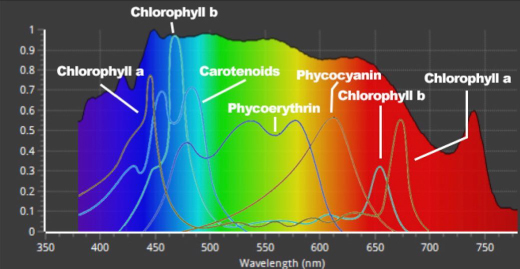
Advantages of invisible light
With rapid technological advancements over the past few decades, an increasing amount of botanical research has shown that non-visible light spectra such as UVB, UVA, and infrared have positive effects on plant development.
For example, plants use special pigments in three light-sensitive Photoreceptors, namely Phototropin (phot), Cryptochrome (cry), and Phytochrome (phy), to gather information from the incident light. These photoreceptors are highly sensitive to different wavelengths of light.
Recent studies have shown that these special pigments in the light photoreceptors respond not only to visible light but also to non-visible light such as UVA, 660 nm photo-red , and infrared, resulting in positive growth reactions.
Myth of PPFD
Individual brands typically market based on PPFD values (photosynthetic photon flux density), where higher PPFD values correspond to better plant growth and growth quality.
PPFD measurement originated decades ago when the understanding of botany and light measurement in the consumer horticulture sector was limited. PPFD provided a relatively simple and understandable reference value for the consumer horticulture industry and non-professional consumers. However, PPFD is only applicable as a reference value derived from visible light measurements for photosynthesis.
Moreover, most plants require PPFD values between 250-350 μmol/m²/s, yet some brands continue to promote higher wattage, pushing PPFD values above 1000 μmol/m²/s. Unless used in large-scale commercial cultivation, these high PPFD values offer little benefit to the average consumer or improvement in planting quality.
Light Quality
Photosyn has introduced a new concept and research direction called “Light Quality.”
“Light quality” refers to the quality of light rather than its intensity (PPFD). Leveraging its proprietary technology, Photosyn simulates a spectrum that is very similar to natural sunlight, achieving a 96% resemblance. This allows us to produce the invisible light necessary for plant growth, which is imperceptible to the human eye. Therefore, under the same power, the light emitted by Photosyn appears weaker to the human eye compared to traditional consumer lighting fixtures. However, its ultra-high-quality spectrum not only enriches all visible light but also significantly improves color rendering to match natural sunlight levels, while also supplementing the invisible light between 310nm and 740nm to enhance plant growth quality.
